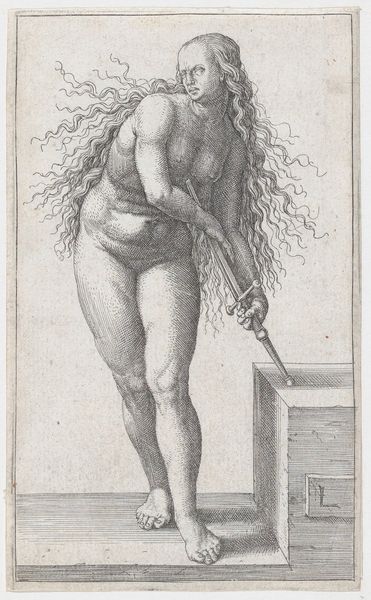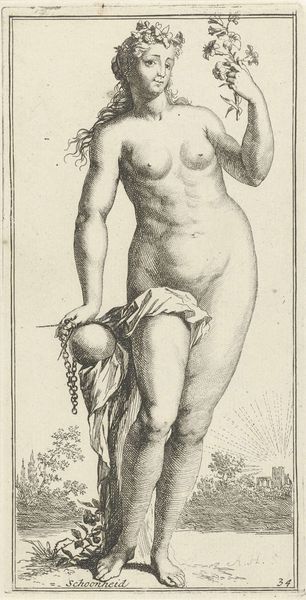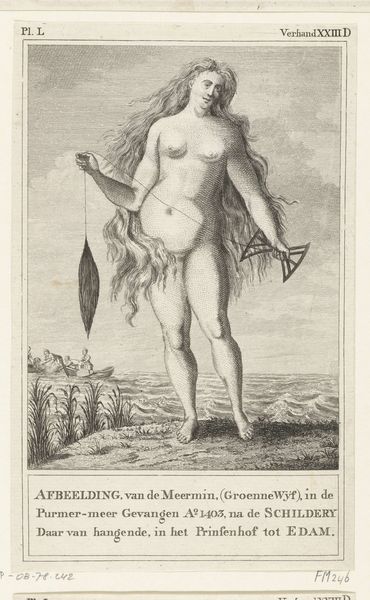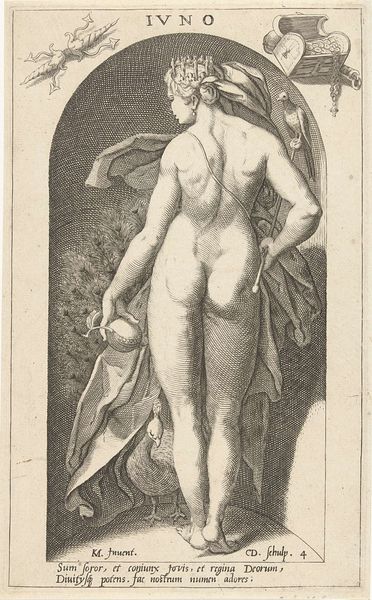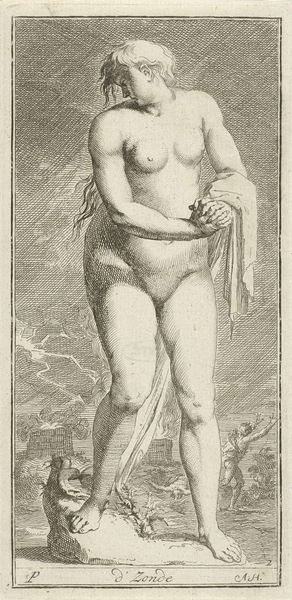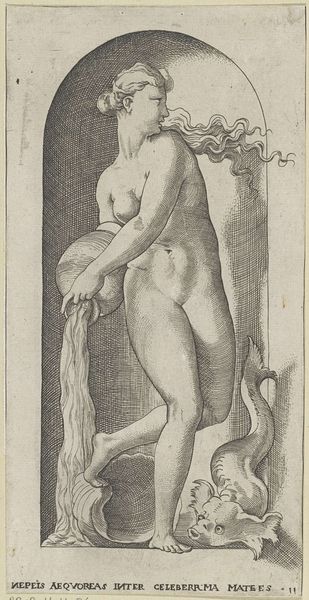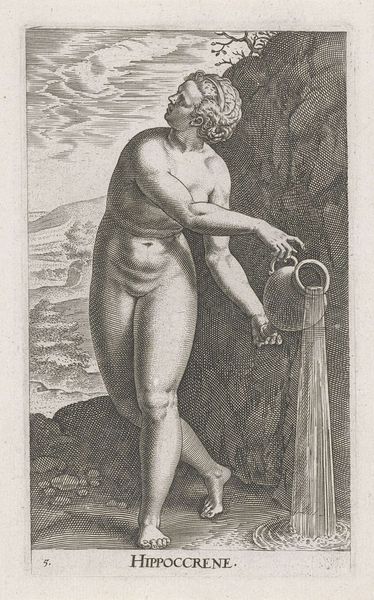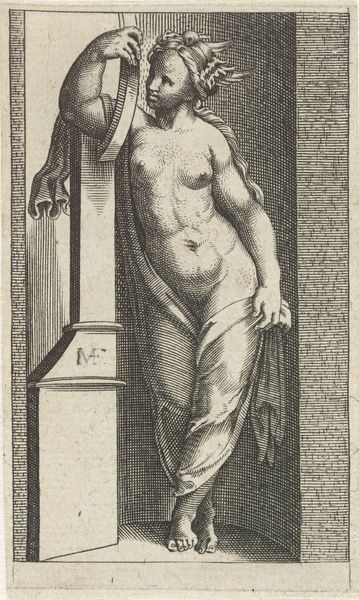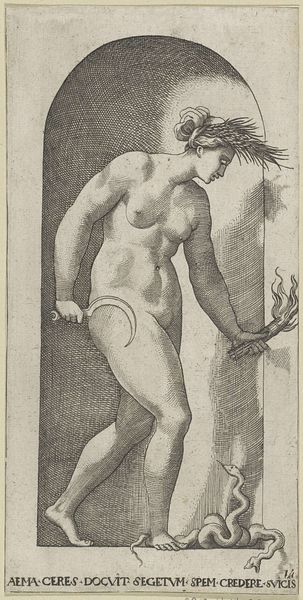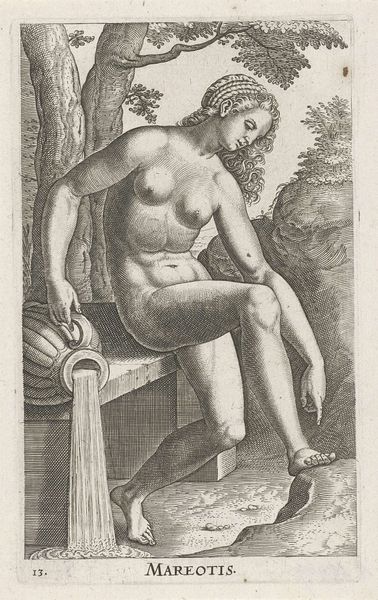
engraving
#
figuration
#
portrait reference
#
line
#
portrait drawing
#
history-painting
#
northern-renaissance
#
nude
#
engraving
Dimensions: height 116 mm, width 68 mm
Copyright: Rijks Museum: Open Domain
Editor: This engraving, "The Suicide of Lucretia," created between 1513 and 1517 by Lucas van Leyden, depicts a nude woman holding a sword, presumably about to end her life. The raw emotion is palpable. What do you see in this piece? Curator: The image resonates with layers of cultural memory. Lucretia’s story, of course, carries significant weight. But let's consider how van Leyden chose to represent her. Note how her gaze pierces outward: is she accusatory, pleading, or defiant? Editor: That’s a great point, I hadn't really considered the significance of her gaze! The figure itself isn't idealized. Curator: Precisely. This is Northern Renaissance, a stark contrast to the Italian idealization of the human form. Her vulnerability, almost confrontational nudity and turbulent hair amplify the horror of the moment. The sword pierces not just flesh, but the social order. Van Leyden cleverly uses the L on the side of the object next to her. Do you have a hunch what it might be? Editor: Perhaps the artist signed his work with an initial! Curator: Possibly so, a cultural marker or indication to connect himself to the image. This image acts as a constant reminder of morality and power dynamics, an example from Roman history and one constantly reappraised over the centuries. Editor: So, we're seeing how an event in Roman history carries social commentary through time. I definitely have a new appreciation for how much this engraving communicates beyond just the immediate narrative. Curator: Indeed. The artist transforms a personal tragedy into an enduring exploration of virtue, shame, and ultimately, agency.
Comments
No comments
Be the first to comment and join the conversation on the ultimate creative platform.
